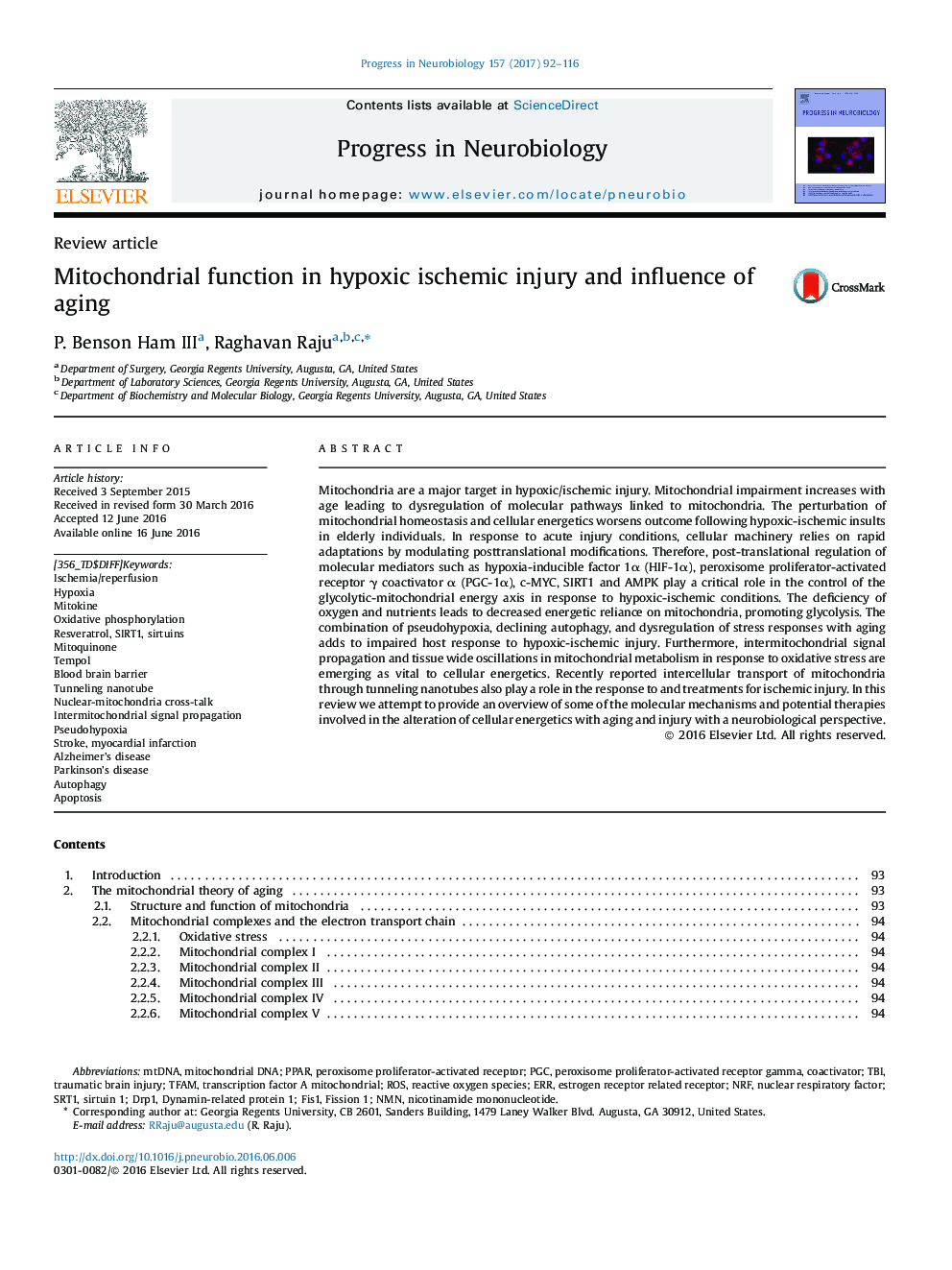| Article ID | Journal | Published Year | Pages | File Type |
|---|---|---|---|---|
| 5739067 | Progress in Neurobiology | 2017 | 25 Pages |
â¢Nuclear-mitochondrial cross talk is important in maintaining mitochondrial structure and function.â¢Metabolic master regulators, c-MYC and HIF-1, modulate mitochondrial function and cell fate following hypoxic/ischemic injury.â¢Aging exacerbates hypoxic/ischemic injury and mitochondrial functional impairment.â¢AMPK-SIRT1 mediated energy sensing is important in energy homeostasis following hypoxic/ischemic injury.â¢Post-translational changes are critical in the control of the glycolytic-mitochondrial energy axis in response to hypoxic/ischemic conditions.
Mitochondria are a major target in hypoxic/ischemic injury. Mitochondrial impairment increases with age leading to dysregulation of molecular pathways linked to mitochondria. The perturbation of mitochondrial homeostasis and cellular energetics worsens outcome following hypoxic-ischemic insults in elderly individuals. In response to acute injury conditions, cellular machinery relies on rapid adaptations by modulating posttranslational modifications. Therefore, post-translational regulation of molecular mediators such as hypoxia-inducible factor 1α (HIF-1α), peroxisome proliferator-activated receptor γ coactivator α (PGC-1α), c-MYC, SIRT1 and AMPK play a critical role in the control of the glycolytic-mitochondrial energy axis in response to hypoxic-ischemic conditions. The deficiency of oxygen and nutrients leads to decreased energetic reliance on mitochondria, promoting glycolysis. The combination of pseudohypoxia, declining autophagy, and dysregulation of stress responses with aging adds to impaired host response to hypoxic-ischemic injury. Furthermore, intermitochondrial signal propagation and tissue wide oscillations in mitochondrial metabolism in response to oxidative stress are emerging as vital to cellular energetics. Recently reported intercellular transport of mitochondria through tunneling nanotubes also play a role in the response to and treatments for ischemic injury. In this review we attempt to provide an overview of some of the molecular mechanisms and potential therapies involved in the alteration of cellular energetics with aging and injury with a neurobiological perspective.
